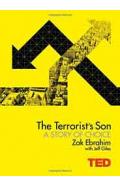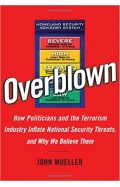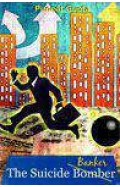- Home
- 11.11 Sale UPTO 90% OFF
- 55% OFF
- Enhanced Interrogation: Inside the Minds and Motives of the Islamic Terrorists Trying To Destroy America
Enhanced Interrogation: Inside the Minds and Motives of the Islamic Terrorists Trying To Destroy America
By: James E. Mitchell
-
Rs 627.75
- Rs 1,395.00
- 55%
You save Rs 767.25.
Due to constant currency fluctuation, prices are subject to change with or without notice.
In the dark days immediately after 9/11, the CIA turned to Dr. James Mitchell to help craft an interrogation program designed to elicit intelligence from just-captured top al-Qa'ida leaders and terror suspects.
A civilian contractor who had spent years training U.S. military members to resist interrogation should they be captured, Mitchell, aware of the urgent need to prevent impending catastrophic attacks, worked with the CIA to implement "enhanced interrogation techniques"--which included waterboarding.
In Enhanced Interrogation, Mitchell now offers a first-person account of the EIT program, providing a contribution to our historical understanding of one of the most controversial elements of America's ongoing war on terror. Readers will follow him inside the secretive "black sites" and cells of terrorists and terror suspects where he personally applied enhanced interrogation techniques.
Mitchell personally questioned thirteen of the most senior high-value detainees in U.S. custody, including Abu Zubaydah; Abd al-Rahim al-Nashiri, the amir or "commander" of the USS Cole bombing; and Khalid Sheikh Mohammed, the mastermind behind the September 11, 2001, terror attacks--obtaining information that he maintains remains essential to winning the war against al-Qa'ida and informing our strategy to defeat ISIS and all of radical Islam.
From the interrogation program's earliest moments to its darkest hours, Mitchell also lifts the curtain on its immediate effects, the controversy surrounding its methods, and its downfall. He shares his view that EIT, when applied correctly, were useful in drawing detainees to cooperate, and that, when applied incorrectly, they were counter-productive. He also chronicles what it is like to undertake a several-years-long critical mission at the request of the government only to be hounded for nearly a decade afterward by congressional investigations and Justice Department prosecutors.
Gripping in its detail and deeply illuminating, Enhanced Interrogation argues that it is necessary for America to take strong measures to defend itself from its enemies and that the country is less safe now without them than it was before 9/11.
In the dark days immediately after 9/11, the CIA turned to Dr. James Mitchell to help craft an interrogation program designed to elicit intelligence from just-captured top al-Qa'ida leaders and terror suspects.
A civilian contractor who had spent years training U.S. military members to resist interrogation should they be captured, Mitchell, aware of the urgent need to prevent impending catastrophic attacks, worked with the CIA to implement "enhanced interrogation techniques"--which included waterboarding.
In Enhanced Interrogation, Mitchell now offers a first-person account of the EIT program, providing a contribution to our historical understanding of one of the most controversial elements of America's ongoing war on terror. Readers will follow him inside the secretive "black sites" and cells of terrorists and terror suspects where he personally applied enhanced interrogation techniques.
Mitchell personally questioned thirteen of the most senior high-value detainees in U.S. custody, including Abu Zubaydah; Abd al-Rahim al-Nashiri, the amir or "commander" of the USS Cole bombing; and Khalid Sheikh Mohammed, the mastermind behind the September 11, 2001, terror attacks--obtaining information that he maintains remains essential to winning the war against al-Qa'ida and informing our strategy to defeat ISIS and all of radical Islam.
From the interrogation program's earliest moments to its darkest hours, Mitchell also lifts the curtain on its immediate effects, the controversy surrounding its methods, and its downfall. He shares his view that EIT, when applied correctly, were useful in drawing detainees to cooperate, and that, when applied incorrectly, they were counter-productive. He also chronicles what it is like to undertake a several-years-long critical mission at the request of the government only to be hounded for nearly a decade afterward by congressional investigations and Justice Department prosecutors.
Gripping in its detail and deeply illuminating, Enhanced Interrogation argues that it is necessary for America to take strong measures to defend itself from its enemies and that the country is less safe now without them than it was before 9/11.
Enhanced Interrogation: Inside the Minds and Motives of the Islamic Terrorists Trying To Destroy America
By: James E. Mitchell
Rs 627.75 Rs 1,395.00 Ex Tax :Rs 627.75
Zubin Mehta: A Musical Journey (An Authorized Biography)
By: VOID - Bakhtiar K. Dadabhoy
Rs 472.50 Rs 1,050.00 Ex Tax :Rs 472.50
Civilian Warriors The Inside Story of Blackwater and the Unsung Heroes of the War on Terror
By: Erik Prince
Rs 1,166.75 Rs 1,795.00 Ex Tax :Rs 1,166.75
Manning Up: How the Rise of Women Has Turned Men into Boys
By: Kay Hymowitz
Rs 646.75 Rs 995.00 Ex Tax :Rs 646.75
Civilian Warriors The Inside Story of Blackwater and the Unsung Heroes of the War on Terror
By: Erik Prince
Rs 1,166.75 Rs 1,795.00 Ex Tax :Rs 1,166.75
No recently viewed books available at the moment.
Zubin Mehta: A Musical Journey (An Authorized Biography)
By: VOID - Bakhtiar K. Dadabhoy
Rs 472.50 Rs 1,050.00 Ex Tax :Rs 472.50
Enhanced Interrogation: Inside the Minds and Motives of the Islamic Terrorists Trying To Destroy America
By: James E. Mitchell
Rs 627.75 Rs 1,395.00 Ex Tax :Rs 627.75
Civilian Warriors The Inside Story of Blackwater and the Unsung Heroes of the War on Terror
By: Erik Prince
Rs 1,166.75 Rs 1,795.00 Ex Tax :Rs 1,166.75











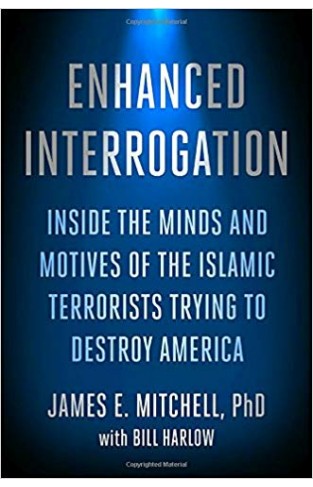
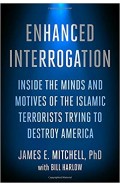
-120x187.jpg?q6)






